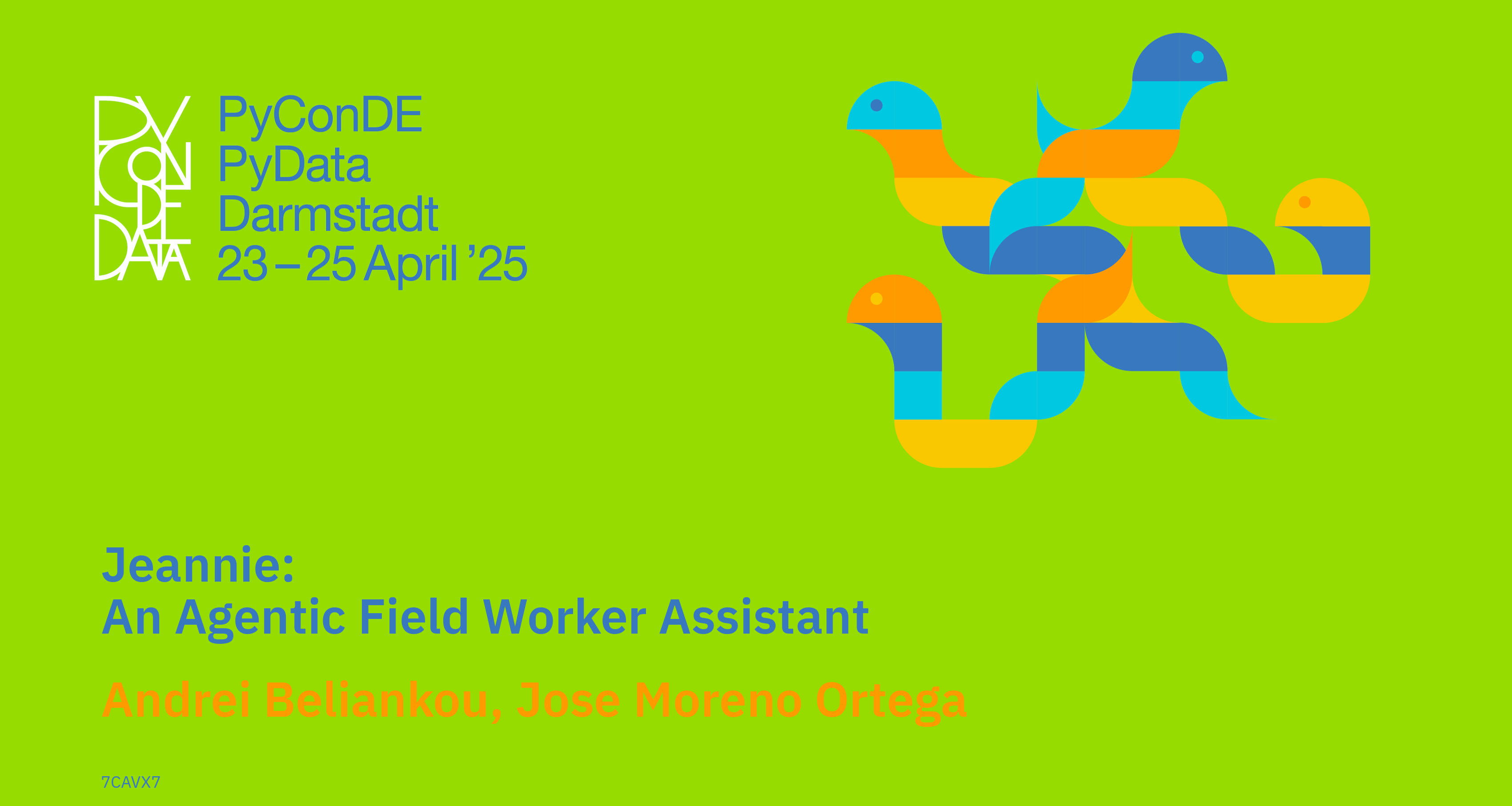This talk showcases Jeannie, an Agentic LLM workflow which we designed and implemented to automate task management for field workers in the energy sector with a focus on E.ON’s daily routines in Germany. Field workers at E.ON are meant to manage many ongoing and urgent daily tasks, such as installing Photovoltaic panels, repairing powerlines, and revising smart meters, often under tight schedules and varying environmental conditions. Thorough preparation is key to efficient task accomplishment. Preparation steps may include weather assessments at the incident location, navigation guidelines, and knowledge of past incidents to ensure safety. However, manual coordination of these elements is time-consuming and error-prone, leading to inefficiencies and safety risks. Jeannie addresses this problem by automating the entire task management lifecycle. The talk will focus on the practical aspects of the system design and implementation using Python and state-of-the-art LLM and an open-source Agentic Workflow stack. The core system drives an agent fleet through the following steps: Agents in parallel • retrieve upcoming tasks from a storage facility, • gather critical information for the task location (weather, driving directions), • assess historical accidents at the given location and for similar tasks in the past, • generate tailored reports, • send the reports to workers assigned to the task, • follow up on task completion, • and log incidents. The workflow is orchestrated with LangGraph, leveraging libraries such as SQLAlchemy for database management, requests for API calls to fetch weather and directions (e.g., OpenWeatherMap and OpenStreetMap APIs with Reverse GeoCoding), smtplib for email automation, and an Azure OpenAI 4o endpoint as the LLM powering the Agents. The RAG component uses a vector store (built with the PGVector extension) to identify past incidents, ensuring workers are warned of potential risks specific to their task and locations. In the talk, we critically evaluate the system's current state and outline the directions for its further development.
